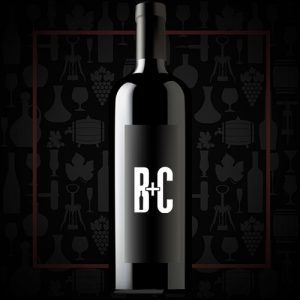Cellar Profile
The Bertolino family’s origins are in the village of Castelnuovo Calcea, in the Asti district of Piemonte. There, more than a century ago, the family began their venture in both winemaking and the wine trade. In the 1920s, the family moved to the neighbouring commune of Nizza Monferrato and the first Bertolino license to sell wine was dated there, on June 18th, 1927. In 1961, the family bought the villa Bauda at Incisa Scapaccino. They created the “Tenuta Olim Bauda” that soon became famous for Freisa, Moscato and, above all, Barbera. Following the tragic death of Bertolino Sr. in 1985, the family was forced to close the winery and sell their prized fruit to other producers in the area. In 2000, the family decided to re-establish the winery and its winemaking traditions. Today, the estate is owned and operated by the three Bertolino siblings: Dino, Diana and Gianni. Their wines are at once modern and classic, loaded with fruit, intensity and brawn and backed by elegance, structure and refinement.
Region
An outstanding high-quality wine region in northwest Italy, widely considered the country’s most stable and evolved viticultural area. Its temperature and rainfall mirror Bordeaux. The vast majority of Piedmont’s terrain is mountainous or hilly, creating optimum elevated vineyard sites for the region’s best varieties. Of those, Nebbiolo enjoys the greatest notoriety and acclaim. The grape reaches its highest potential in the sub-regions of Barolo and Barbaresco where it is made into incredibly structured, complex, and ageworthy wines. Approximately half of Piedmont’s vineyards are planted with Barbera. The past thirty years have seen significant improvement in Barbera-based wines, with some commanding price levels that approach those of Barolo and Barbaresco. Prior to 1980, white wines were, for the most part, an afterthought, but they are now gaining acclaim and popularity in Italy and abroad. Of particular interest is the resurgence of Gavi, made from the Cortese grape, and the low-alcohol, frizzante Moscato d’Asti.
Vineyard
Tenuta Olim Bauda’s 100% Cortese vineyard is the best area in the world for this grape variety, with plantings on the southern slopes of hills, at an altitude of approximately 300 metres above sea level.
Varieties
Cortese is widely considered one of Piedmont’s finest white grape varieties. It pairs particularly well with the region’s delicately-prepared fish. It is usually mid-weight, citrus- and mineral-inflected with moderate acidity. Quality can vary greatly depending on producer and site.
Winemaking
Grapes are hand-selected from vines planted at 300 masl in marly clay soils. Destemmed and pressed in the evening following harvest. The must is then racked into stainless steel vats where it undergoes skin maceration at a temperature of 12°C. After skin separation, alcoholic fermentation begins and lasts for approximately 15 days at a temperature of 15 – 16°C. The wine will remain on gross lees in stainless steel vats until May, to add richness and complexity.
Tasting Notes
The Bertolino family wine style leans toward ripeness and concentration and this Gavi is no exception. Made from hand-harvested Cortese, skin contact and fermentation are longer than most in the category. Extended lees contact adds texture and weight while salty, leesy minerality take centre stage alongside beautiful, rich citrus and yellow plum. Moderate acids and terrific length frame this versatile Italian white.

 info@buyersandcellars.ca
www.buyersandcellars.ca
info@buyersandcellars.ca
www.buyersandcellars.ca